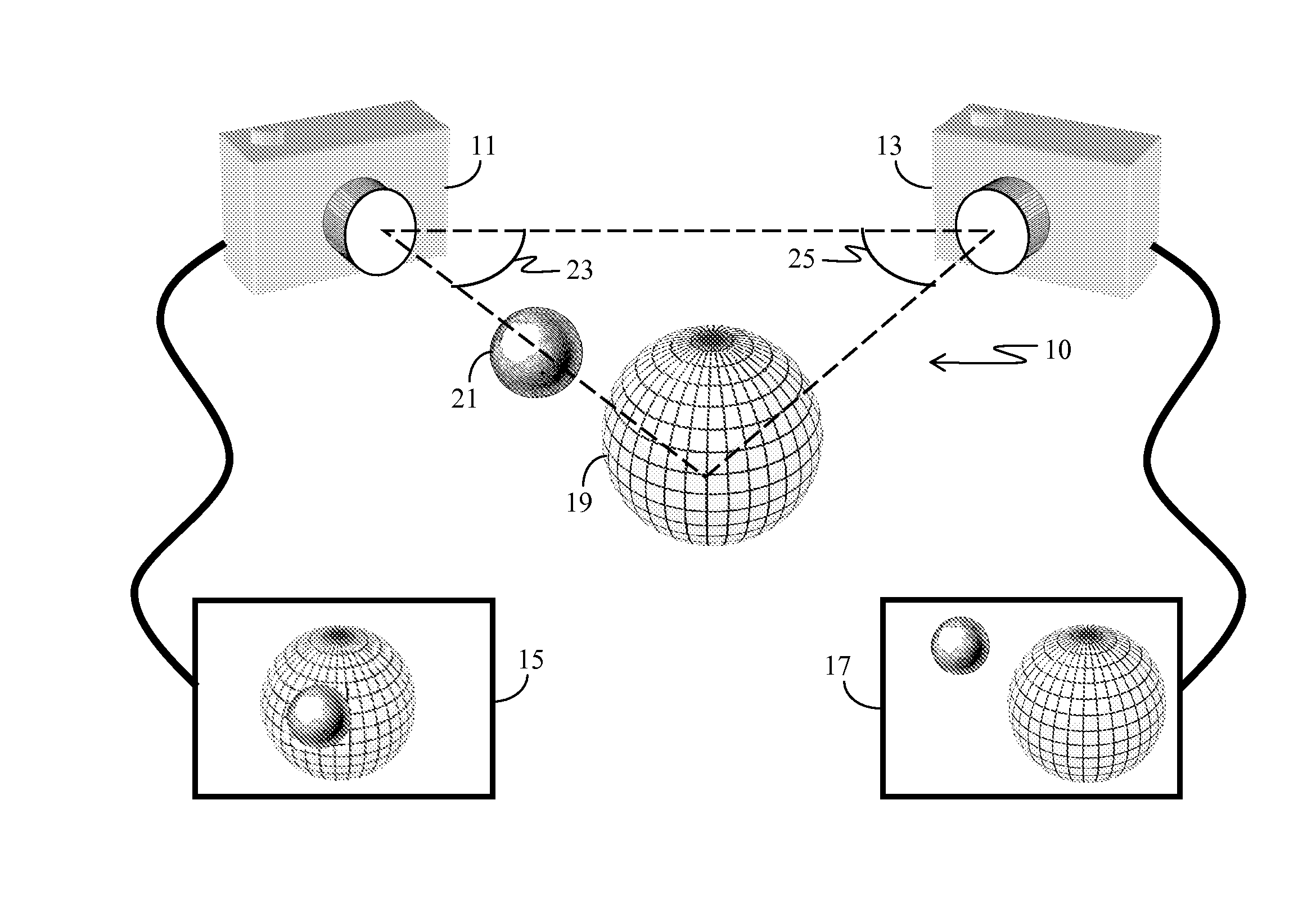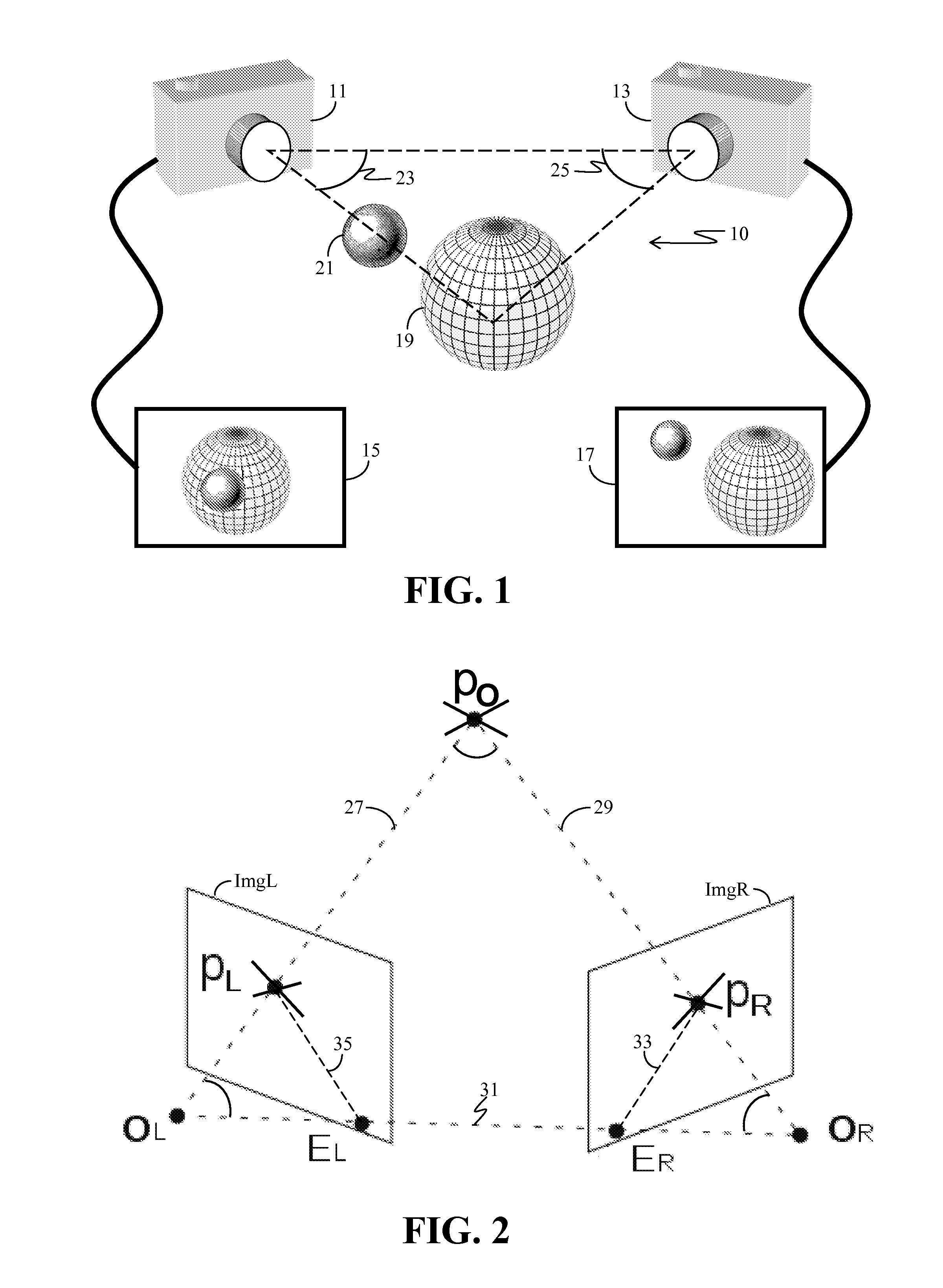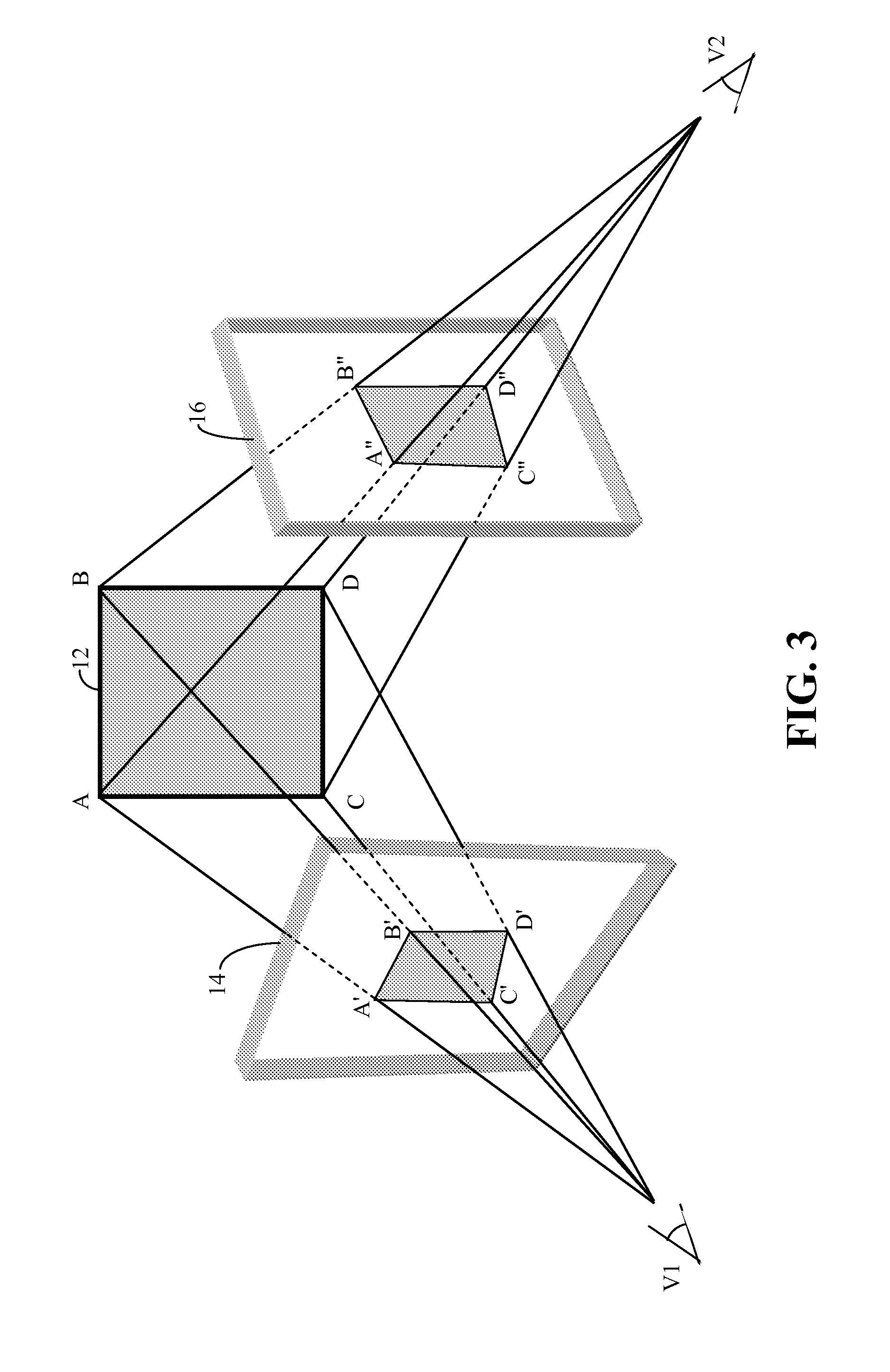Ray image modeling for fast catadioptric light field rendering
a catadioptric light field and image modeling technology, applied in the field of catadioptric cameras, can solve the problems of inability to find the correct correspondence, inability to match the correspondence, and inability to achieve the correct corresponden
- Summary
- Abstract
- Description
- Claims
- Application Information
AI Technical Summary
Benefits of technology
Problems solved by technology
Method used
Image
Examples
Embodiment Construction
[0080]Correspondence matching is an essential problem in computer vision, especially in stereo, view synthesis, and 3D reconstruction. Indeed, stereo matching is probably the most studied 3D scene reconstruction method in computer vision. Most existing approaches assume that the input cameras are perspective cameras, which provide a single, comparatively narrow perspective view. And since use of perspective cameras, which are defined by the pinhole camera model, is typically assumed, most research efforts have focused on handling issues unrelated to different camera models. For example, most research has focused on textures, noise, specularity, and occlusion boundaries. These methods assume the existence of epipolar geometry, which permits two images to be rectified to have a pure horizontal parallax, and thus are subject to the stereo constraint.
[0081]Recently, interest in 3D reconstruction using multi-perspective cameras has been growing. Multi-perspective cameras provide a wider ...
PUM
 Login to View More
Login to View More Abstract
Description
Claims
Application Information
 Login to View More
Login to View More - R&D
- Intellectual Property
- Life Sciences
- Materials
- Tech Scout
- Unparalleled Data Quality
- Higher Quality Content
- 60% Fewer Hallucinations
Browse by: Latest US Patents, China's latest patents, Technical Efficacy Thesaurus, Application Domain, Technology Topic, Popular Technical Reports.
© 2025 PatSnap. All rights reserved.Legal|Privacy policy|Modern Slavery Act Transparency Statement|Sitemap|About US| Contact US: help@patsnap.com



